
Key Takeaways
- sudoswap is a decentralized NFT marketplace built on Ethereum.
- It adopts an automated market model similar to Uniswap, hosting liquidity pools for NFTs rather than standalone listings.
- sudoswap’s design offers several advantages for NFT trading over other venues like OpenSea, which explains why its popularity has soared in recent weeks.
Learn how to buy and sell NFTs on crypto’s first NFT automated market maker.
What Is sudoswap?
sudoswap is making NFT trading even easier.
Launched in May 2022, sudoswap is crypto’s first NFT automated market maker. The Ethereum-based platform functions similarly to Uniswap, letting users trustlessly trade assets through user-funded liquidity pools. However, instead of trading between two fungible tokens, sudoswap users can trade between NFTs and ETH.
At first glance, it might be hard to see what advantages sudoswap offers the average user over conventional NFT trading platforms like OpenSea, the world’s biggest NFT marketplace with trading volumes that far surpass all of its competitors. Unlike OpenSea, sudoswap’s pools are completely decentralized and funded by its users. However, this doesn’t mean that trading is free—the creator of the trading pool sets a swap fee of a few per cent paid to them from every successful NFT purchase or sale.
The fees generated when assets are traded through the platform’s pools return to those providing the NFT and ETH liquidity. This also means that sudoswap bypasses existing royalty fees placed on collections by their creators. Additionally, the lower the swap fees are on a specific pool, the more incentive users have to trade through it. This incentivizes a “race to the bottom” for pool creators to offer the lowest fees, resulting in better prices for end users.
A final benefit of sudoswap is that it lets NFT owners sell their assets instantly without having to wait for a buyer, in turn improving liquidity and efficiency in the NFT market.
However, arguably the most innovative part of sudoswap is how it manages the value of the NFTs traded through its pools. The platform uses bonding curves to automatically increase and decrease the bid and ask on each collection depending on how many NFTs are bought or sold. For example, when a user sells an NFT into a pool, increasing the supply, the buy price slightly declines. Depending on the delta value selected by the pool’s creator, the more NFTs sold, the lower the price per NFT becomes until market forces find its fair value. On the other hand, buying an NFT from a pool incrementally increases the cost of subsequent purchases, keeping the asset’s price in line with demand.
Over the past few weeks, the amount of users interacting with sudoswap has exploded. According to Dune data compiled by 0xRob, the protocol had an average of 36 users a day in July. One month later, sudoswap has registered almost 2,000 daily users and a total trading volume of over $18 million.
Getting Started With sudoswap
Trading NFTs on sudoswap is no more difficult than interacting with other automated trading platforms. As with interacting with any blockchain protocol, make sure you’re on the correct site and connect your Web3 wallet using the on-screen prompts.
Once connected, navigate over to the collections page to see which NFT collections users have created liquidity pools for. The biggest and most active pools are for popular, well-established, and frequently traded collections—don’t expect to find pools for smaller and more obscure projects. After finding a collection to trade, click on it, then navigate to the “pools” tab. This will show the user-created pools offering NFTs from the collection, how much liquidity there is for each one, the type of bonding curve used, and the Delta value (how much sales and purchases affect the price of NFTs in the pool). We’ll use the Webaverse Genesis Pass collection for this demonstration.
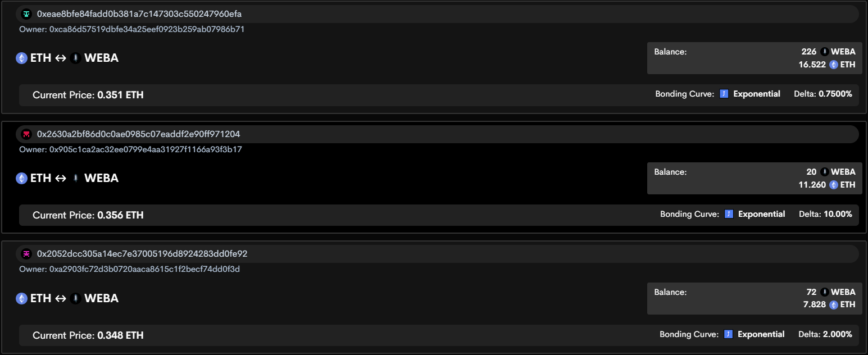
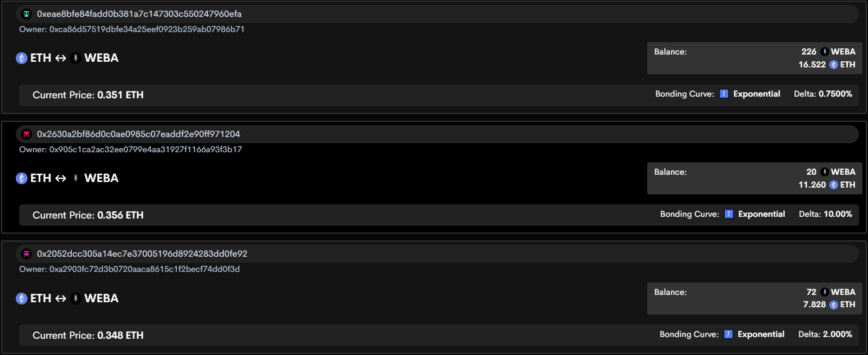
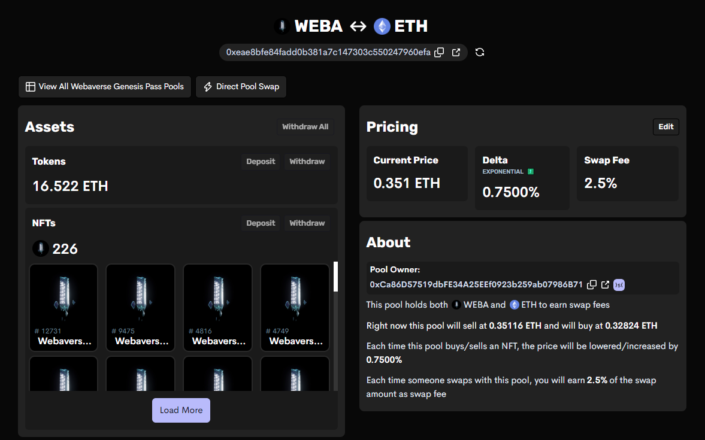
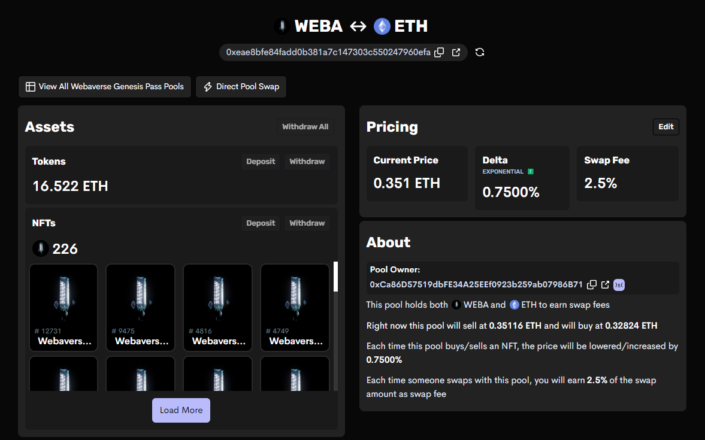
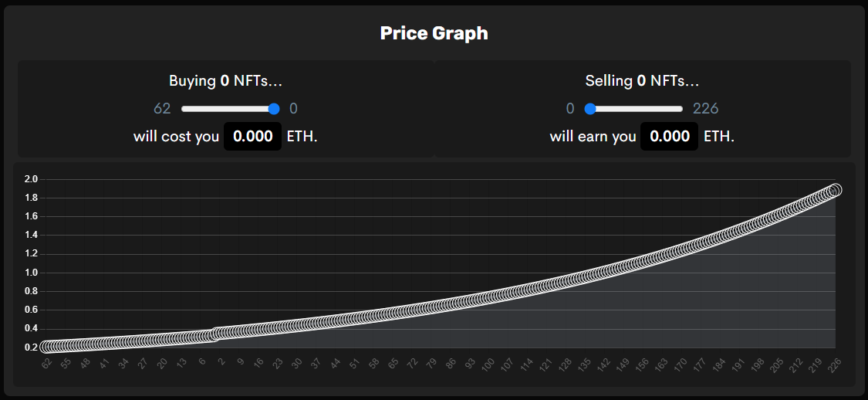
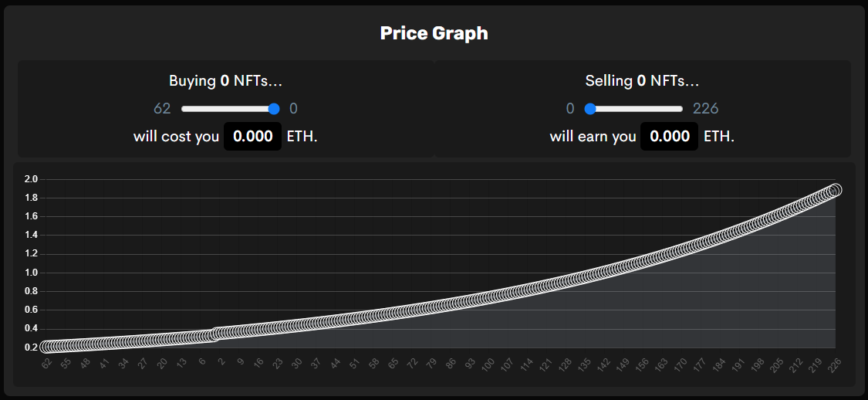
The same principles for buying multiple NFTs applies when selling them. If we needed to sell several NFTs from a collection quickly, we could likely get a better overall price by selling single NFTs to individual pools rather than selling all of them to the same one.
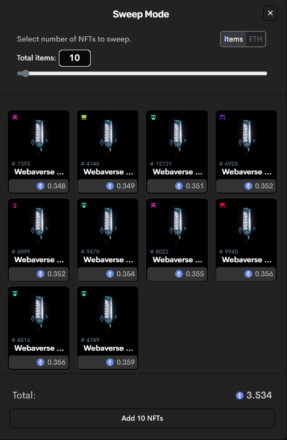
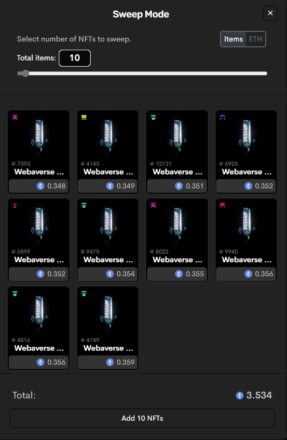
While sudoswap is still in its infancy, it could potentially revolutionize NFT trading. Members of the NFT community have already started experimenting with different uses for the protocol ranging from raffle systems to GameFi marketplaces. At the same time, speculators are hoping to capitalize on the hype with derivative projects like Sudo Loot and Sudo Inu. While it’s unclear whether sudoswap will host more substantial collections in the future, that might not matter. It’s already pushed NFT trading forward and looks set for a bright future.
Disclosure: At the time of writing this piece, the author owned ETH and several other fungible and non-fungible cryptocurrencies.











